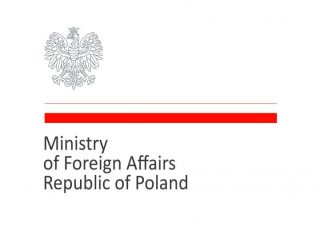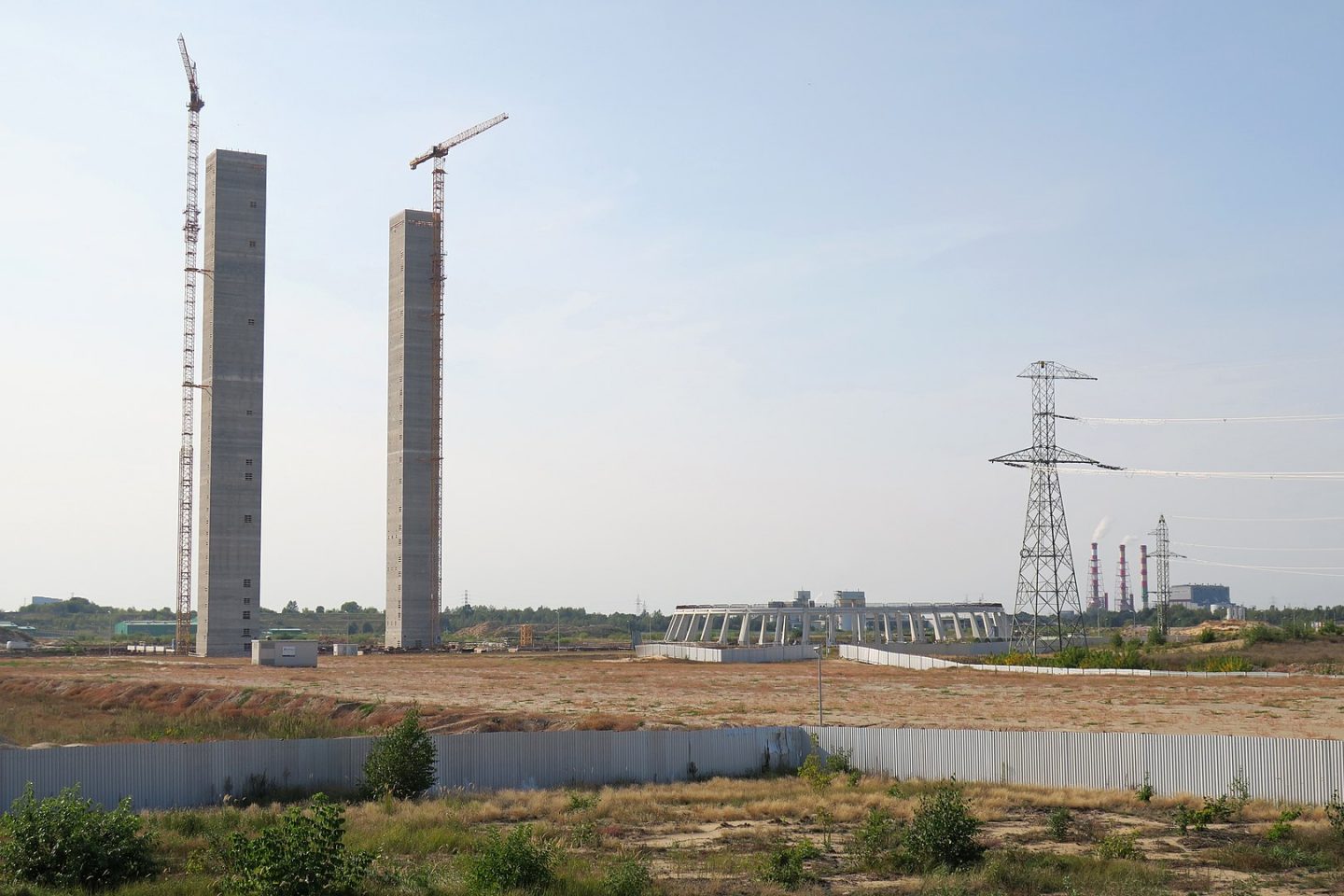Energy sector: crucial bond for Central and Eastern Europe?
W skrócie
The cooperation of Central and Eastern European countries is intensifying and taking on increasingly realistic forms. What links the interests of Poland and other countries in the region? The energy sector. Numerous large-scale investments, ambitious plans and a common goal – independence from Russia. Poland is building a common market for energy resources and the infrastructure necessary for its transport, with the aim of increasing its national security.
Russia is trying to defend its monopoly in the export of energy resources to countries that were once within the USSR’s sphere of influence. However, Poland is effectively diversifying the sources of raw material supplies, thus providing the countries of the region with an alternative. With real US support, it is possible to intensify cooperation with Belarus and Ukraine, brokered by Polish companies. However, is it possible to become fully independent from imported hydrocarbons from Moscow?
Gas pipelines for energy freedom
There is no freedom without choice. Countries doomed to the Russian energy monopoly became susceptible to pressure from the Kremlin. Without a real alternative, the former Soviet republics would once again have to bow down before Moscow. ‘With a sensible energy policy, the countries of our region, led by Poland, may transform the geopolitics of this part of the world, carrying the torch of freedom to the East. Its emanation will be the expansion of the free gas market’ – such a thesis was formulated by Wojciech Jakóbik in 2014. It is in energy integration that we may find the successes of Polish eastern policy.
However, it’s not all that easy. Although the Soviet Union is no more, the infrastructure built at the time, entirely controlled by the Kremlin, is still operational. For many years, the Baltic states were connected to the post-Soviet power grid, which raised concerns about the possible emergence of energy blackmail.
Fortunately, that problem has been solved. The LitPol Link connection is already in operation, created in cooperation with Polish and Lithuanian companies – accordingly Polskie Sieci Elektroenergetyczne and Lithuanian Litgrid – established in 2015 under an agreement between Poland, the Baltic states and the European Commission. The synchronization of the Balts with the European energy network will be completed by the planned second connection in the form of the Harmony Link submarine cable. Full synchronization is planned for 2025, and the first tests are already underway.
The cooperation of the Baltic states may also extend to the development of offshore wind energy. Lithuania, Latvia, Estonia, but also Poland are planning investments in this area. To coordinate them, the Baltic Energy Interconnection Plan was established, which will allow for better management of the Baltic Sea area.
Another area of energy integration in the region is gas infrastructure. Poland’s first step towards its own security was the construction of a gas terminal in Świnoujście, which was launched in 2015. This investment improved its negotiating position with Russia’s Gazprom. Lithuania did a similar thing, building an LNG terminal in Klaipeda in 2014. Thus, it proved that diversifying the sources of obtaining raw materials is an effective method of negotiating better contract terms. The gas that reaches Poland and Lithuania by sea goes to neighbouring countries by means of tankers and gives them an alternative and an opportunity to become independent of the Russian hegemon.
However, this raw material may soon be transported using gas pipelines that are being built on most Polish borders. The interconnector (i.e. the connection between the transmission systems of two countries) on the border with Lithuania is already under construction and is of considerable importance. According to the government’s targets, Poland’s gasification rate is to reach 90% by 2022. The liquified natural gas (LNG) from the Klaipeda terminal is to play a significant role in this process. According to reports, block C of the Polish Ostrołęka power plant would be powered by gas from Lithuania.
Investments are also being carried out on our southern borders. Years later, an agreement was reached with the Czechs. The proposal to build a completely new connection under the name STORK II was rejected in favour of expanding the existing infrastructure. The cost of the project on both sides of the border is estimated at EUR 210 million. Its launch would take place at the end of 2027. ‘This is the missing element of the North-South Corridor under the Three Seas Initiative, connecting the Baltic Pipe and the LNG terminal in Świnoujście with the countries of the Visegrád Group, as well as with Croatia,’ said Tomasz Stępień, president of Gaz System, about the emerging Poland-Slovakia interconnector. The European Union has backed this project with EUR 100 million. The investment has the interest of other countries. This may positively affect the gas market in Hungary and Romania.
The Poland-Ukraine gas pipeline is also being considered. All formalities were completed on the Polish side. However, no final investment decision has been made so far. Much more work is to be done on the Ukrainian side, and Poland’s neighbours are still debating whether this is the best option for them. If the infrastructure were to be built, it would be sufficient to build half a kilometre of a gas pipeline in Poland, but as much as 110 km in Ukraine. Our eastern neighbours need significant financial support. Perhaps it will be granted by the United States, which is interested in gas cooperation with Ukraine.
Transatlantic cooperation
Oleksiy Orzhel, Minister of Energy and Environment of Ukraine, declared his willingness to sign a long-term contract for gas supplies from the USA in order to increase energy security. The authorities in Minsk had reached similar conclusions before protests started in Belarus. When Vladimir Putin made attempts to unite Russia and Belarus formally, the Americans came to the rescue. Mike Pompeo, US vice president, visited Minsk in February this year and announced that mutual relations would be unfrozen and expressed readiness to cover 100% of Belarus’s energy demand.
The declarations quickly transformed into real actions. American oil began to flow to Belarus thanks to the involvement of the Polish company UNIMOT, which is responsible for the physical delivery of the product. Belarus then embarked on a long journey to diversify raw material sources, with the intention of reducing the effectiveness of Moscow’s pressure in the future.
The plans were ambitious. Minsk intended to build a new oil pipeline between the refineries in Mozyr and Novopolotsk. This infrastructure was to enable oil to be acquired from directions other than the east (including Poland), using the reverse of the Friendship Oil Pipeline. Appropriate work is also underway on the Polish side. PERN has announced that the eastern section of the pipeline will be able to perform the reverse operation, i.e. send oil in both directions. Poland realised the necessity of this investment when contaminated oil from Russia was delivered to Polish refineries. Transmission via the ‘Friendship’ pipeline was then stopped for several dozen days.
Due to the protests and political instability in Belarus, the whole process was put on hold, and it is not known whether it will be unfrozen, but it is worth paying attention to its motivations, which show a certain model of operation common to the entire region. In order to become independent of the Russian dictate, Ukraine also asked the United States for help.
Polish expansion
Poland strives to meet the needs of its neighbours and wants to become the main gas hub in the region. The PGNiG has acquired shares in the Duva field in Norway. This is where gas is to be produced to supply the Baltic Pipe currently under construction. The PGNiG already holds interests in 29 concessions on the Norwegian Continental Shelf. The company has also become the sole user of the LNG terminal in Klaipeda, from where some of the gas – necessary for the diversification of Poland and the entire region – will come from. The same is true of oil. Lotos also has concessions on the Norwegian Continental Shelf, and Orlen controls the Mažeikiai refinery.
Polish companies could also buy shares in Belarusian and Ukrainian refineries, which could use a financial boost. The eastern direction is indicated as a priority for the further development of Polish oil companies, especially after the takeover of Lotos by Orlen and further planned mergers. The Russians did not like this vision, and they began to scare Belarusians with alleged price increases. They also warned against the difficulties that such investments may encounter. The Russians also frighten Belarus with the prospect of a repeat of Mažeikiai, where problems began immediately after Orlen took over the refinery.
Integration in Poland’s interest
The countries of the region are aware of the need for further cooperation. One of the many examples of the will to further energy integration is the resolution adopted at the 9th Session of the Ukraine-Poland-Lithuania Interparliamentary Assembly. Representatives of the parliaments of the three countries unanimously supported the idea of an Eastern European energy hub. The project would connect these countries’ power plants, terminals and gas storage facilities. The Ukrainian representatives say that such an investment will allow Ukraine and Lithuania to become energetically independent from Russia. The document also contains a declaration of connection of individual elements of critical infrastructure: roads, rail connections, power lines and gas pipelines.
From the Baltic to the Adriatic Sea and from the Odra River to the Black Sea, a process of real integration is taking place in the most sensitive areas. This idea is supported by the instruments of the European Union. The countries of the region realise that without cooperation, the negotiating position of each of them towards global superpowers is much weaker. The Kremlin tried to preserve its status using energy and economic projects. The Americans are not going to back down and are also relevant in this energy puzzle.
Poland’s goal should be the increased integration of the countries in the region and the creation of feasible alternatives to the Russian monopoly. Poland should strive to ensure that its neighbouring countries have the possibility of free choice, which increases their security directly, and Poland’s indirectly. Polish businesses should make money from the eastern domestic policy, in particular by actively joining the integration process and the flow of raw materials. All this is already happening, but it must be accelerated for it to be possible to build not only Polish prosperity and security but also that of the entire region.
Polish version is available here.
 Publication (excluding figures and illustrations) is available under Creative Commons Attribution 4.0 International. Any use of the work is allowed, provided that the licensing information, about rights holders and about the contest "Public Diplomacy 2020 – new dimension" (below) is mentioned.
Publication (excluding figures and illustrations) is available under Creative Commons Attribution 4.0 International. Any use of the work is allowed, provided that the licensing information, about rights holders and about the contest "Public Diplomacy 2020 – new dimension" (below) is mentioned.
The publication co-financed by the Ministry of Foreign Affairs of the Republic of Poland as part of the public project "Public Diplomacy 2020 – new dimension" („Dyplomacja Publiczna 2020 – nowy wymiar”). This publication reflects the views of the author and is not an official stance of the Ministry of Foreign Affairs of the Republic of Poland.




